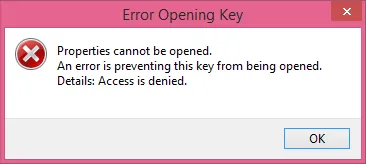我正在尝试让一个旧的PowerShell脚本显示先前连接的USB设备的时间。在阅读了一些取证博客(如blogs和this)之后,我发现了this script,它来自于this blog(Jason Walker编写的脚本)。
不幸的是,它没有显示任何时间戳或其他有用的设备详情。所以我希望也有办法获取这些信息。只是我不知道如何融合这些信息。
抱歉,我无法正确突出显示PSH代码。 如何使用此方法来改进脚本?
这提供了事件(2003、2102)的时间戳和消息内容,可以进一步解析。
不幸的是,它没有显示任何时间戳或其他有用的设备详情。所以我希望也有办法获取这些信息。只是我不知道如何融合这些信息。
Function Get-USBHistory {
[CmdletBinding()]
Param
(
[parameter(ValueFromPipeline=$True,ValueFromPipelinebyPropertyName=$True)]
[alias("CN","Computer")]
[String[]]$ComputerName=$Env:COMPUTERNAME,
[Switch]$Ping
)
Begin {
$TempErrorAction = $ErrorActionPreference
$ErrorActionPreference = "Stop"
$Hive = "LocalMachine"
$Key = "SYSTEM\CurrentControlSet\Enum\USBSTOR"
}
Process
{
$USBDevices = @()
$ComputerCounter = 0
ForEach($Computer in $ComputerName)
{
$USBSTORSubKeys1 = @()
$ChildSubkeys = @()
$ChildSubkeys1 = @()
$ComputerCounter++
$Computer = $Computer.Trim().ToUpper()
Write-Progress -Activity "Collecting USB history" -Status "Retrieving USB history from $Computer" -PercentComplete (($ComputerCounter/($ComputerName.Count)*100))
If($Ping)
{
If(-not (Test-Connection -ComputerName $Computer -Count 1 -Quiet))
{
Write-Warning "Ping failed on $Computer"
Continue
}
}#end if ping
Try
{
$Reg = [Microsoft.Win32.RegistryKey]::OpenRemoteBaseKey($Hive,$Computer)
$USBSTORKey = $Reg.OpenSubKey($Key)
$USBSTORSubKeys1 = $USBSTORKey.GetSubKeyNames()
}#end try
Catch
{
Write-Warning "There was an error connecting to the registry on $Computer or USBSTOR key not found. Ensure the remote registry service is running on the remote machine."
}#end catch
ForEach($SubKey1 in $USBSTORSubKeys1)
{
$ErrorActionPreference = "Continue"
$Key2 = "SYSTEM\CurrentControlSet\Enum\USBSTOR\$SubKey1"
$RegSubKey2 = $Reg.OpenSubKey($Key2)
$SubkeyName2 = $RegSubKey2.GetSubKeyNames()
$ChildSubkeys += "$Key2\$SubKeyName2"
$RegSubKey2.Close()
}#end foreach SubKey1
ForEach($Child in $ChildSubkeys)
{
If($Child -match " ")
{
$BabySubkey = $null
$ChildSubkey1 = ($Child.split(" "))[0]
$SplitChildSubkey1 = $ChildSubkey1.split("\")
0..4 | Foreach{ [String]$BabySubkey += ($SplitChildSubkey1[$_]) + "\"}
$ChildSubkeys1 += $BabySubkey + ($Child.split(" ")[-1])
$ChildSubkeys1 += $ChildSubkey1
}
Else
{
$ChildSubkeys1 += $Child
}
$ChildSubKeys1.count
}#end foreach ChildSubkeys
ForEach($ChildSubkey1 in $ChildSubkeys1)
{
$USBKey = $Reg.OpenSubKey($ChildSubkey1)
$USBDevice = $USBKey.GetValue('FriendlyName')
If($USBDevice)
{
$USBDevices += New-Object -TypeName PSObject -Property @{
USBDevice = $USBDevice
Computer = $Computer
Serial = $ChildSubkey1.Split("\")[-1]
}
}
$USBKey.Close()
}#end foreach ChildSubKey2
$USBSTORKey.Close()
#Display results
$USBDevices | Select Computer,USBDevice,Serial
}#end foreach computer
}#end process
End
{
#Set error action preference back to original setting
$ErrorActionPreference = $TempErrorAction
}
}#end function
而且C#代码:
using System;
using System.Diagnostics;
using System.Linq;
using System.Runtime.InteropServices;
using Microsoft.Win32;
using Microsoft.Win32.SafeHandles;
class Program
{
static void Main(string[] args)
{
string usbStor = @"SYSTEM\ControlSet001\Enum\USBSTOR";
using (var keyUsbStor = Registry.LocalMachine.OpenSubKey(usbStor))
{
var usbDevices = from className in keyUsbStor.GetSubKeyNames()
let keyUsbClass = keyUsbStor.OpenSubKey(className)
from instanceName in keyUsbClass.GetSubKeyNames()
let keyUsbInstance = new RegistryKeyEx(keyUsbClass.OpenSubKey(instanceName))
select new
{
UsbName = keyUsbInstance.Key.GetValue("FriendlyName"),
ConnectTime = keyUsbInstance.LastWriteTime
};
foreach (var usbDevice in usbDevices.OrderBy(x => x.ConnectTime))
{
Console.WriteLine("({0}) -- '{1}'", usbDevice.ConnectTime, usbDevice.UsbName);
}
}
}
}
/// <summary>
/// Wraps a RegistryKey object and corresponding last write time.
/// </summary>
/// <remarks>
/// .NET doesn't expose the last write time for a registry key
/// in the RegistryKey class, so P/Invoke is required.
/// </remarks>
public class RegistryKeyEx
{
#region P/Invoke Declarations
// This declaration is intended to be used for the last write time only. int is used
// instead of more convenient types so that dummy values of 0 reduce verbosity.
[DllImport("advapi32.dll", EntryPoint = "RegQueryInfoKey", CallingConvention = CallingConvention.Winapi, SetLastError = true)]
extern private static int RegQueryInfoKey(
SafeRegistryHandle hkey,
int lpClass,
int lpcbClass,
int lpReserved,
int lpcSubKeys,
int lpcbMaxSubKeyLen,
int lpcbMaxClassLen,
int lpcValues,
int lpcbMaxValueNameLen,
int lpcbMaxValueLen,
int lpcbSecurityDescriptor,
IntPtr lpftLastWriteTime);
#endregion
#region Public Poperties
/// <summary>
/// Gets the registry key owned by the info object.
/// </summary>
public RegistryKey Key { get; private set; }
/// <summary>
/// Gets the last write time for the corresponding registry key.
/// </summary>
public DateTime LastWriteTime { get; private set; }
#endregion
/// <summary>
/// Creates and initializes a new RegistryKeyInfo object from the provided RegistryKey object.
/// </summary>
/// <param name="key">RegistryKey component providing a handle to the key.</param>
public RegistryKeyEx(RegistryKey key)
{
Key = key;
SetLastWriteTime();
}
/// <summary>
/// Creates and initializes a new RegistryKeyInfo object from a registry key path string.
/// </summary>
/// <param name="parent">Parent key for the key being loaded.</param>
/// <param name="keyName">Path to the registry key.</param>
public RegistryKeyEx(RegistryKey parent, string keyName)
: this(parent.OpenSubKey(keyName))
{ }
/// <summary>
/// Queries the currently set registry key through P/Invoke for the last write time.
/// </summary>
private void SetLastWriteTime()
{
Debug.Assert(Key != null, "RegistryKey component must be initialized");
GCHandle pin = new GCHandle();
long lastWriteTime = 0;
try
{
pin = GCHandle.Alloc(lastWriteTime, GCHandleType.Pinned);
if (RegQueryInfoKey(Key.Handle, 0, 0, 0, 0, 0, 0, 0, 0, 0, 0, pin.AddrOfPinnedObject()) == 0)
{
LastWriteTime = DateTime.FromFileTime((long)pin.Target);
}
else
{
LastWriteTime = DateTime.MinValue;
}
}
finally
{
if (pin.IsAllocated)
{
pin.Free();
}
}
}
}
抱歉,我无法正确突出显示PSH代码。 如何使用此方法来改进脚本?
更新:2017年11月06日
在@iRon的建议下,我尝试直接访问注册表路径:HKLM\SYSTEM\CurrentControlSet\Enum\USBSTOR\<drive>\Properties,使用RegEdit,但是我遇到了一个权限错误,这很奇怪,因为我的用户帐户是管理员。(这是在Win8.1上)
- 使用Windows内置的Event Viewer并创建自定义视图。但是,这需要您已经启用了事件日志。
- 同样,使用logparser和一个CMD批处理script,如here和here所示。(需要启用事件日志。)
- 按照此处所述的取证方法,检查各种注册表条目和日志文件:
...\Windows\inf\setupapi.dev.log以获取第一次连接日期,但如何获取最后一次连接不太清楚。(据说通过比较\NTUSER\<username>\Software\Microsoft\Windows\Explorer\MountPoints2数据,但我找不到它。) - 此外,书籍“Windows Registry Forensics:Advanced Digital Forensic Analysis of the Windows Registry”还从第95页开始提供了一些额外的提示(3)。
一个可能有用的 PowerShell 单行代码是:
Get-WinEvent -LogName Microsoft-Windows-DriverFrameworks-UserMode/Operational | where {$_.Id -eq "2003" -or $_.Id -eq "2102"} | Format-Table –Property TimeCreated, Id, Message -AutoSize -Wrap
这提供了事件(2003、2102)的时间戳和消息内容,可以进一步解析。
TimeCreated Id Message
----------- -- -------
2017-11-09 13:37:04 2102 Forwarded a finished Pnp or Power operation (27, 2) to the lower driver for device
SWD\WPDBUSENUM\_??_USBSTOR#DISK&VEN_KINGSTON&PROD_DATATRAVELER_G2&REV_PMAP#YYYYY&0#{XXXXX} with status 0x0.
2017-11-09 13:37:04 2102 Forwarded a finished Pnp or Power operation (27, 23) to the lower driver for device
SWD\WPDBUSENUM\_??_USBSTOR#DISK&VEN_KINGSTON&PROD_DATATRAVELER_G2&REV_PMAP#YYYYY&0#{XXXXX} with status 0x0.
2017-11-09 13:34:38 2003 The UMDF Host Process ({XXXXX}) has been asked to load drivers for device
SWD\WPDBUSENUM\_??_USBSTOR#DISK&VEN_KINGSTON&PROD_DATATRAVELER_G2&REV_PMAP#YYYYY&0#{XXXXX}.
2017-11-06 15:18:41 2102 Forwarded a finished Pnp or Power operation (27, 2) to the lower driver for device SWD\WPDBUSENUM\{XXXXX}#0000000000007E00 with status 0x0.
2017-11-06 15:18:41 2102 Forwarded a finished Pnp or Power operation (27, 23) to the lower driver for device SWD\WPDBUSENUM\{XXXXX}#0000000000007E00 with status 0x0.
2017-11-06 15:18:13 2003 The UMDF Host Process ({XXXXX}) has been asked to load drivers for device SWD\WPDBUSENUM\{XXXXX}#0000000000007E00.

nt authority\system权限才能深入查看以下内容:HKLM\SYSTEM\CurrentControlSet\Enum\USBSTOR\<drive>\Properties\。您是否尝试过使用RegEdit.exe提取信息? - iRonGet-ItemProperty -Path 'HKLM:\SYSTEM\CurrentControlSet\Enum\USBSTOR\Disk&Ven_IT1165&Prod_USB_Flash_Disk&Rev_0.00\000000005BE51F59&0\' -Name *可以揭示很多信息。然而,我没有看到任何有关使用时间戳的内容。 - lit